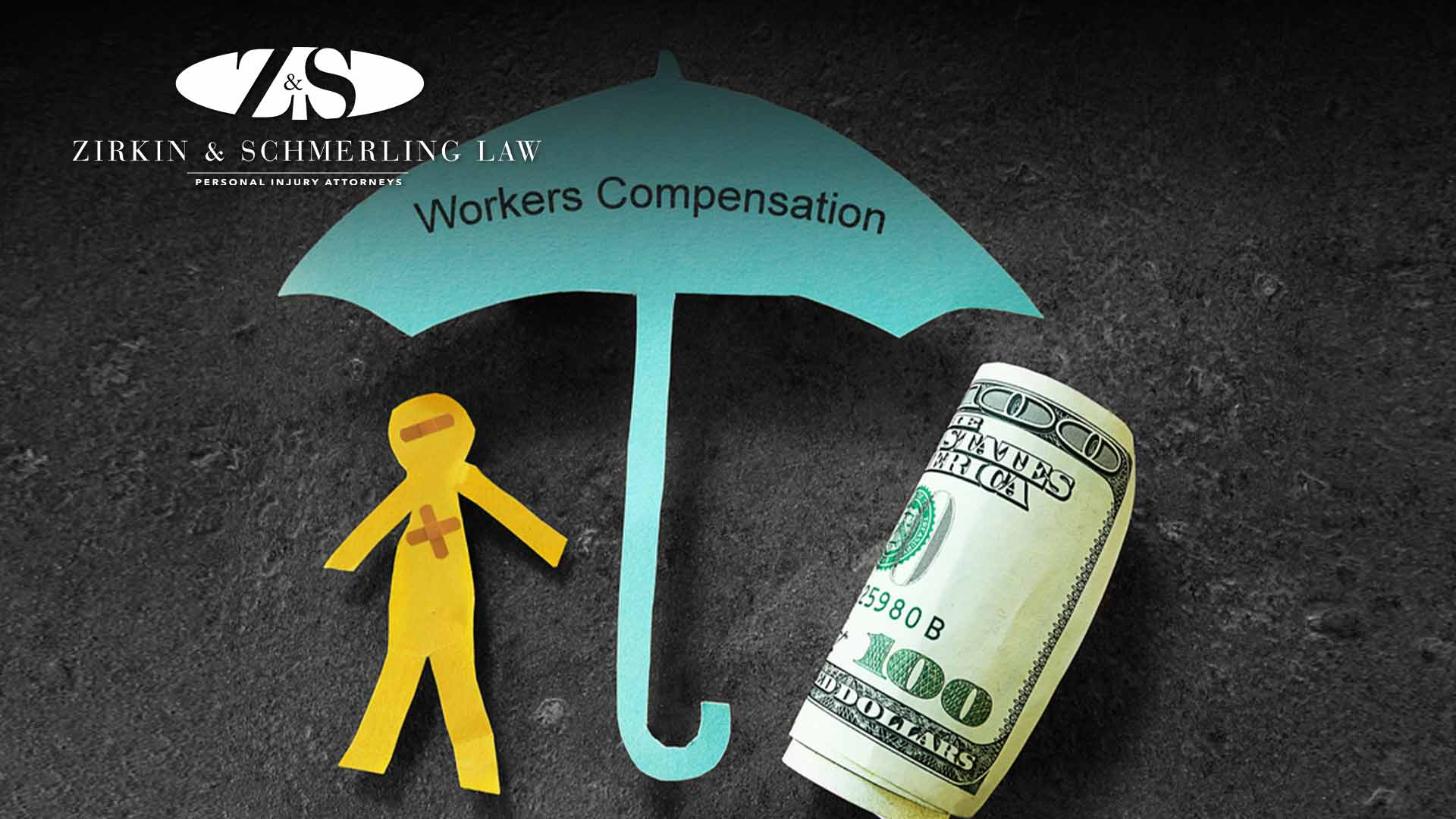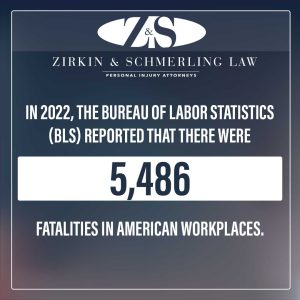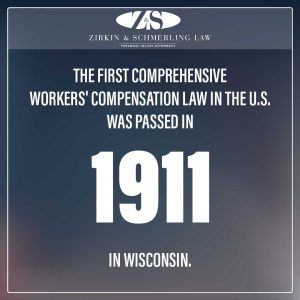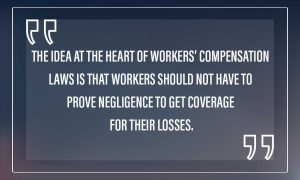
Today’s workers are protected by a collection of workers’ compensation laws.

Every day, workers in America are hurt and even killed on the job. Risky industries like construction, manufacturing, and transportation are not the only jobs where people are injured. Employees are also hurt in retail jobs, offices, and healthcare facilities.
In 2022, the Bureau of Labor Statistics (BLS) reported that there were 5,486 fatalities in American workplaces. In 2022, there were 2.8 million nonfatal workplace injuries and illnesses, which marked an increase from previous years.
These injuries include accidents, repetitive stress injuries, illnesses, and more.
Maryland workers may experience the following injuries in the workplace:
- Overexertion injuries
- Slips, trips, and falls
- Struck by object
- Repetitive motion injuries
- Cuts and lacerations
- Exposure to harmful substances
- Transportation accidents
- Workplace violence
Regardless of the circumstances surrounding a workplace injury, you are entitled to obtain a workers’ compensation attorney near Baltimore. If the injuries prompting your claim are severe enough that they permanently alter your lifestyle or your ability to work, your workers’ compensation attorney will advocate for your right to receive proper medical care, benefits, and compensation.
Where did these protections come from? How did we become a nation that provides these protections to our workforce? Workers’ compensation history is actually quite fascinating.
Workers’ Compensation History: An Introduction
During the Industrial Revolution, American workers had almost no protections, and they were unlikely to receive any sort of compensation if they were injured on the job. As the manufacturing industry experienced unprecedented growth, employees were consistently injured and killed by new machinery, unsafe workplaces, and more.
Factory workers were constantly exposed to hazardous working conditions, including:
- Poorly ventilated spaces
- Exposure to toxic chemicals
- Dangerous machines without safety protections
- Physically demanding jobs
- Child labor
- Fire risk
When people were injured at work, they had to go to court to attempt to get compensation, and the odds were stacked against them.
Employers would use three main defenses to get out of paying their injured workers:
- Employers would argue that the worker was partially or entirely responsible for their injuries, so the employer shouldn’t have to pay.
- Employers would use the “Fellow Servant” defense to say that it was the responsibility of other employees to keep their co-workers safe, and that is who failed the employee – not the employer.
- Employers would argue that the “Assumption of Risk” meant that employees had already accepted the risks associated with their work when they agreed to be hired, and therefore the employer shouldn’t have to pay.
There are many famous stories of injured workers trying to get compensation for their losses.
The Radium Girls, whose bodies were destroyed by exposure to the radium they painted onto watch dials, had to testify from their deathbeds to convince the courts that they deserved compensation.
After the Triangle Shirtwaist Factory Fire killed 146 garment factory workers, families only received a $75 per-fatality payout for the deaths of their loved ones, despite the extreme negligence exhibited by the factory owners.
Countless unknown victims of workplace injuries were unable to get compensation after these terrible injuries. Although unions fought hard to improve conditions, the laws needed to change.
When Did Workers’ Compensation Begin?

To understand the answer to the question, “When was workers’ compensation created,” we have to look back to Germany in 1884.
The current United States workers’ compensation program owes its origins to Germany. Known as Sickness and Accident Laws, Chancellor Otto von Bismarck of Germany enacted the first modern workers’’ compensation laws in 1884.
The Accident Insurance Law provided a form of no-fault insurance coverage for workers’ injuries and deaths occurring in the workplace. This was one of the first modern laws mandating compensation for industrial accidents.
The United States followed Germany’s lead several decades later. The first comprehensive workers’ compensation law in the U.S. was passed in 1911 in Wisconsin. By 1920, most U.S. states had enacted some form of workers’ compensation statutes inspired by Bismarck’s early legislation in Germany.
By 1921, only six states had failed to implement a workers’ compensation law.
Further Development of Workers’ Compensation History
In 1948, Mississippi became the last state in the U.S. to pass a workers’ compensation bill, which meant that more employees than ever before were protected from losing their livelihoods because of an injury at work.

Before states adopted workers’ compensation laws, the only way for injured workers to recover medical expenses, lost wages, and other damages was by proving employer negligence. Doing so was typically a long, costly, and uncertain process, especially as workers did not meet with a workers’ compensation lawyer.
Employers often used contributory negligence as a defense, which precluded workers from collecting any damages if they contributed in any way to the accident. Other times, an employer could successfully raise an assumption of risk defense to limit the injured worker’s ability to collect compensation.
The idea at the heart of workers’ compensation laws is that workers should not have to prove negligence to get coverage for their losses. Under workers’ compensation law, as long as the workplace injuries are documented and a doctor confirms that the incident on the job caused those injuries, workers are eligible for compensation.
Workers’ Compensation in Maryland Today

Workers’ compensation is a state-run insurance program, so injured workers should consult with a workers’ compensation lawyer in their state.
The laws that govern workers’ compensation in Maryland can be difficult for a layperson to understand, especially if you are dealing with the pain and stress that accompanies recovering from a serious injury or illness.
These are just some of the workers’ compensation laws that are in place in Maryland:
- Workers’ compensation provides wage replacement benefits, medical treatment, vocational rehabilitation, and other benefits to workers who are either injured on the job or who acquire an occupational disease.
- For an injury to be covered, it must be an “accidental personal injury arising out of and in the course of employment.”
- The law covers employees only, not independent contractors or sole proprietors.
- Occupational diseases caused by job conditions or exposures are covered, even if they can’t be linked to a specific incident or accident. (For example, carpal tunnel syndrome occurs after repetitive stress, rather than a one-time injury.)
- For permanent partial disabilities, compensation is paid for a set number of weeks based on the body part injured.
- Employers/insurers must cover medical expenses, hospitalization, prosthetics, and assistive devices related to a worker’s injury.
- Workers can receive vocational rehabilitation services for up to 24 months if unable to return to their previous job.
Contact Zirkin & Schmerling for Your Workers’ Compensation Case
Workers are significantly better protected under workers’ compensation laws than they have ever been in our nation’s history. The workers’ compensation system requires employers to provide certain protections to injured employees. Even so, navigating the process and making sure that you get the full benefits you are owed can be complicated and overwhelming.
It is critical to have an experienced workers’ compensation attorney on your side, advocating for your rights. The team at Zirkin & Schmerling Law has extensive experience when it comes to handling all types of workers’ compensation claims in Maryland.
We understand the nuances of state laws, insurance payouts, settlements, and more. We will fight for the maximum compensation you deserve for your workplace injury or occupational illness.
Contact Zirkin & Schmerling for a free case review by calling 410-753-4611. We’re here for you every step of the way!
